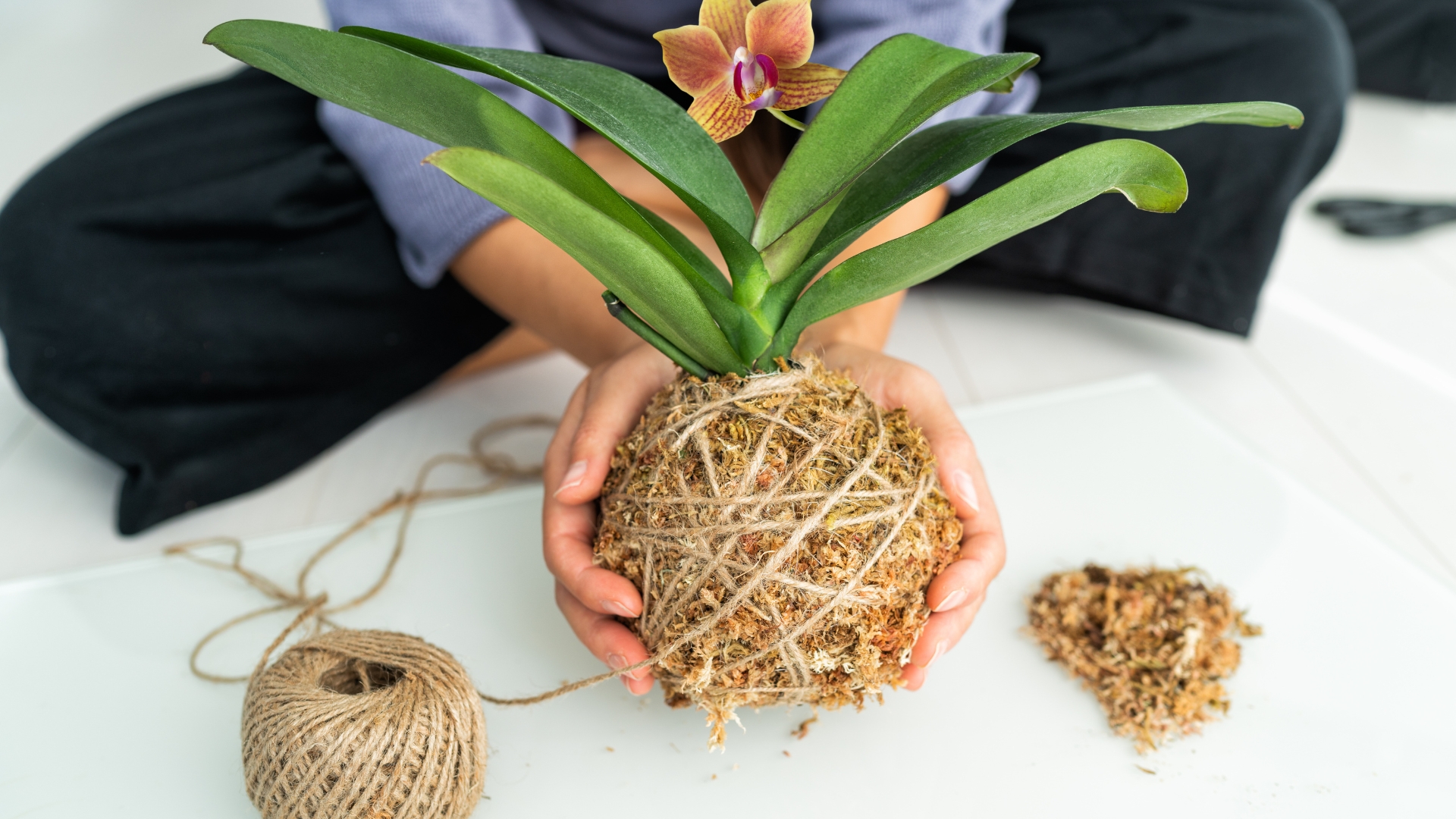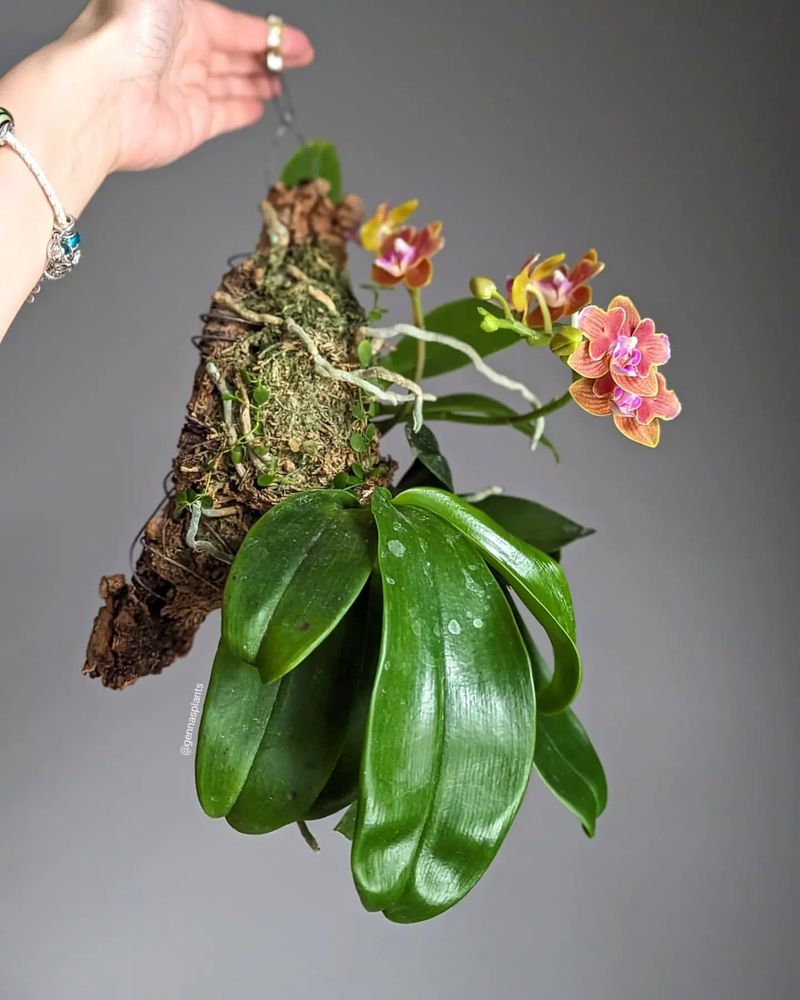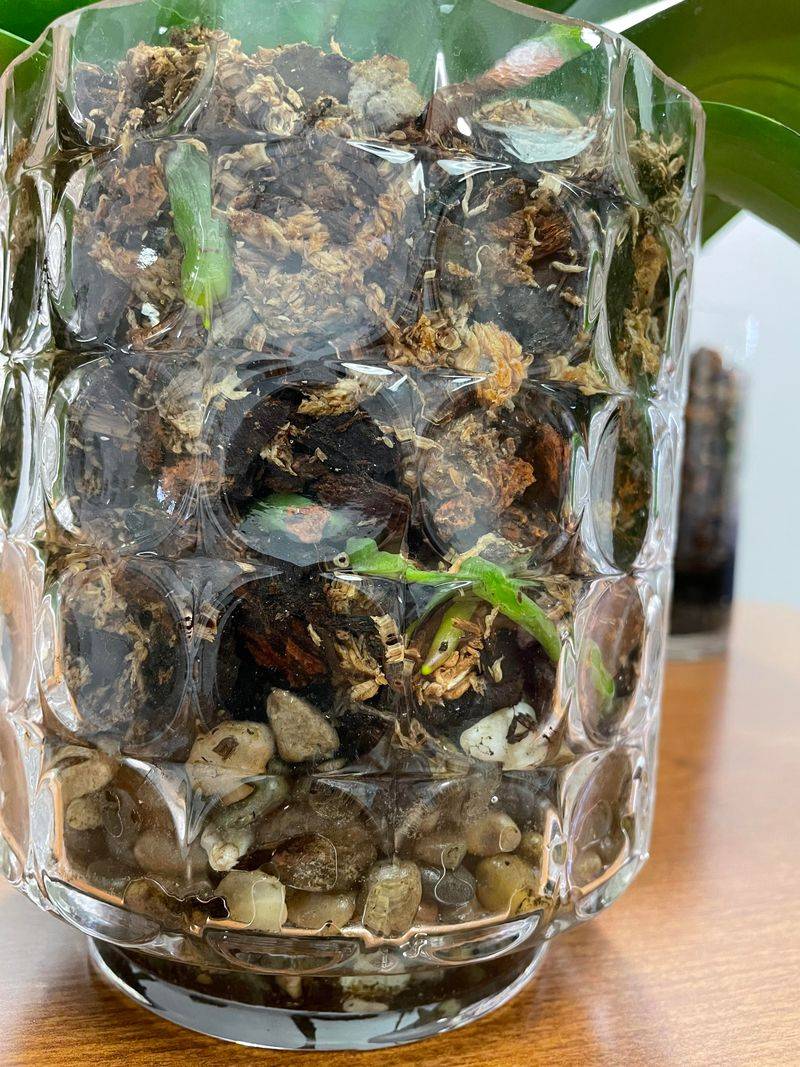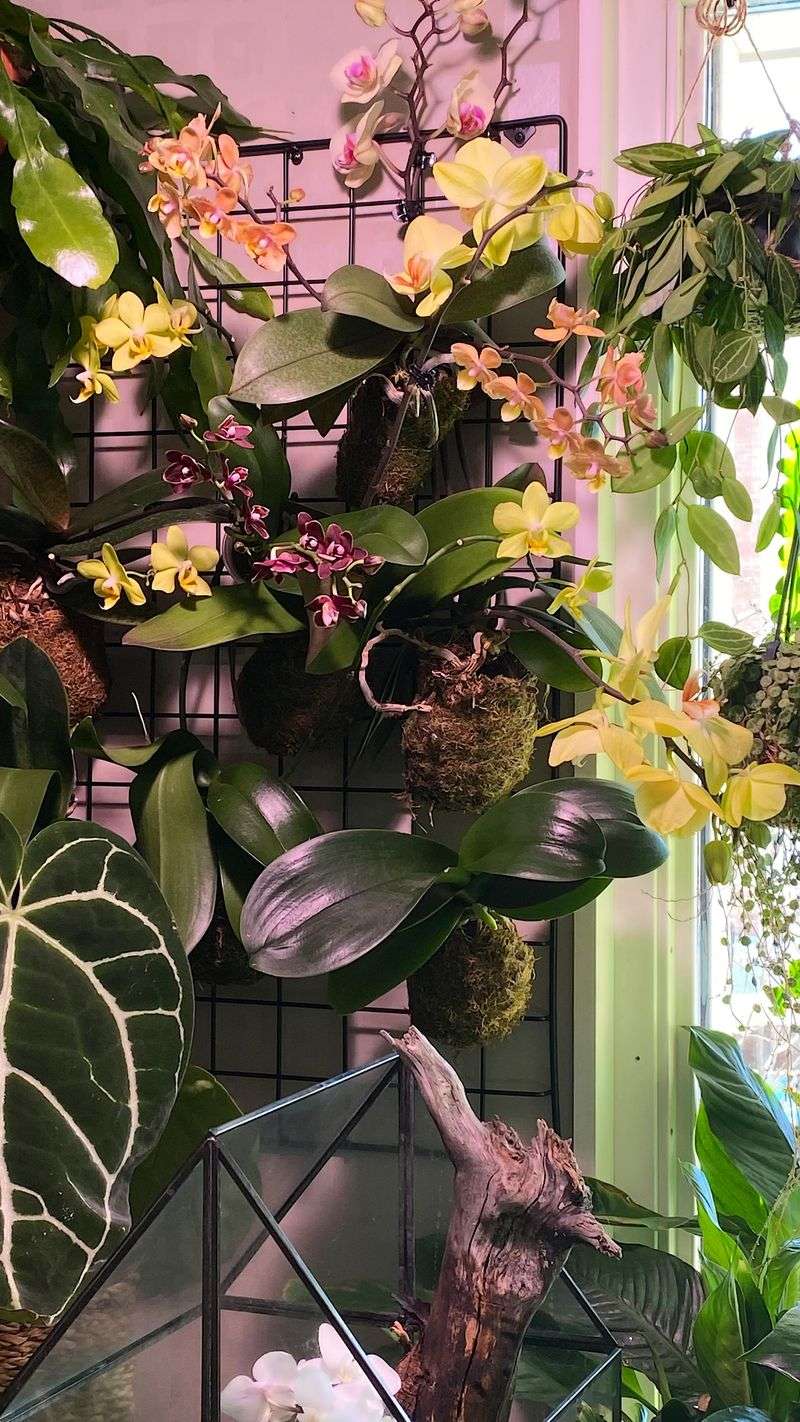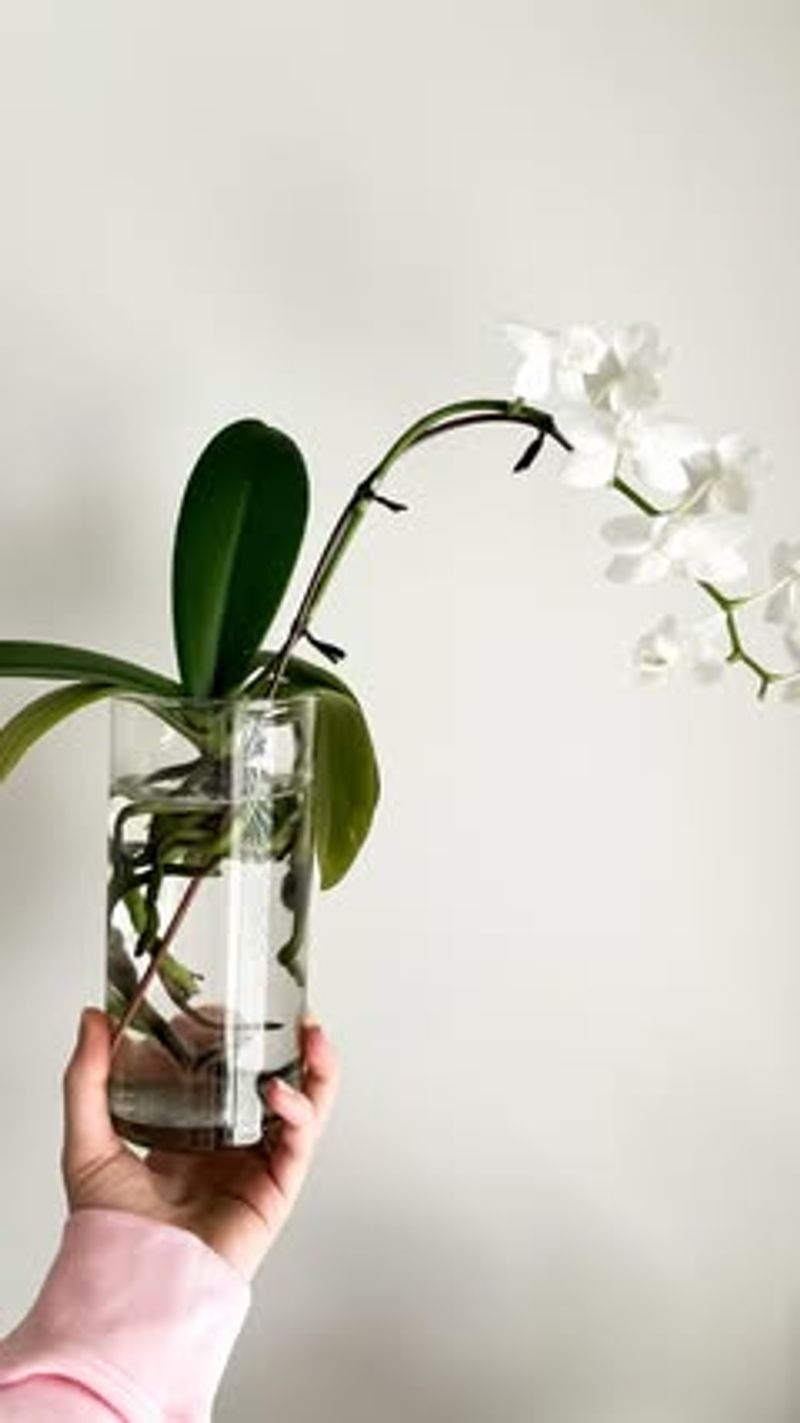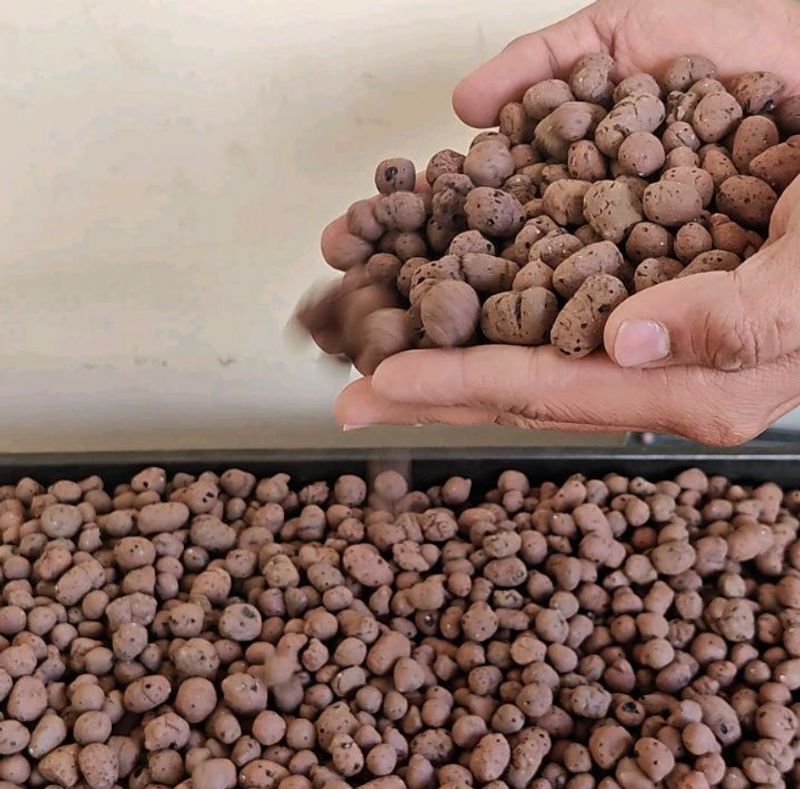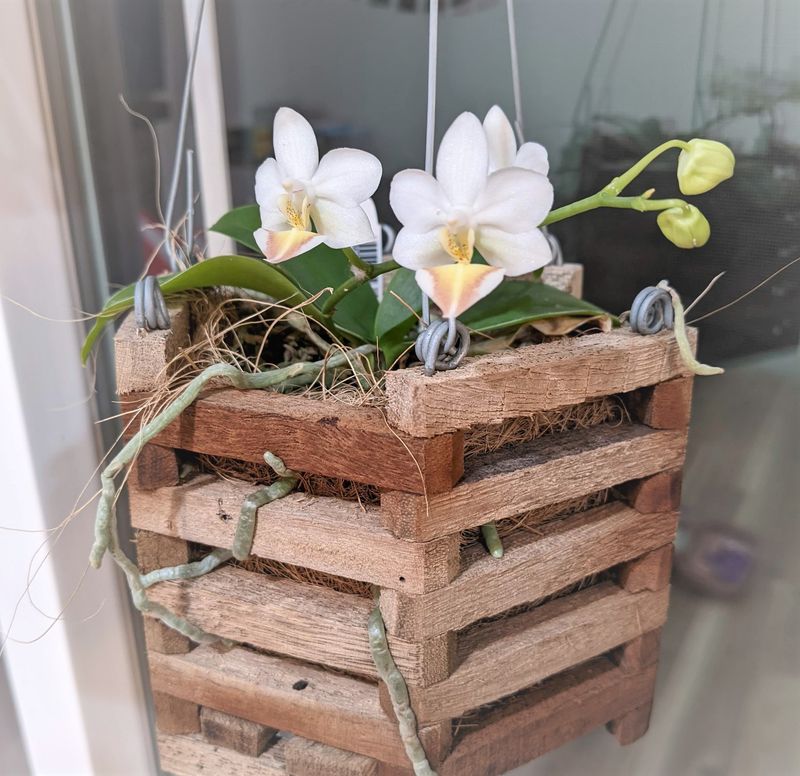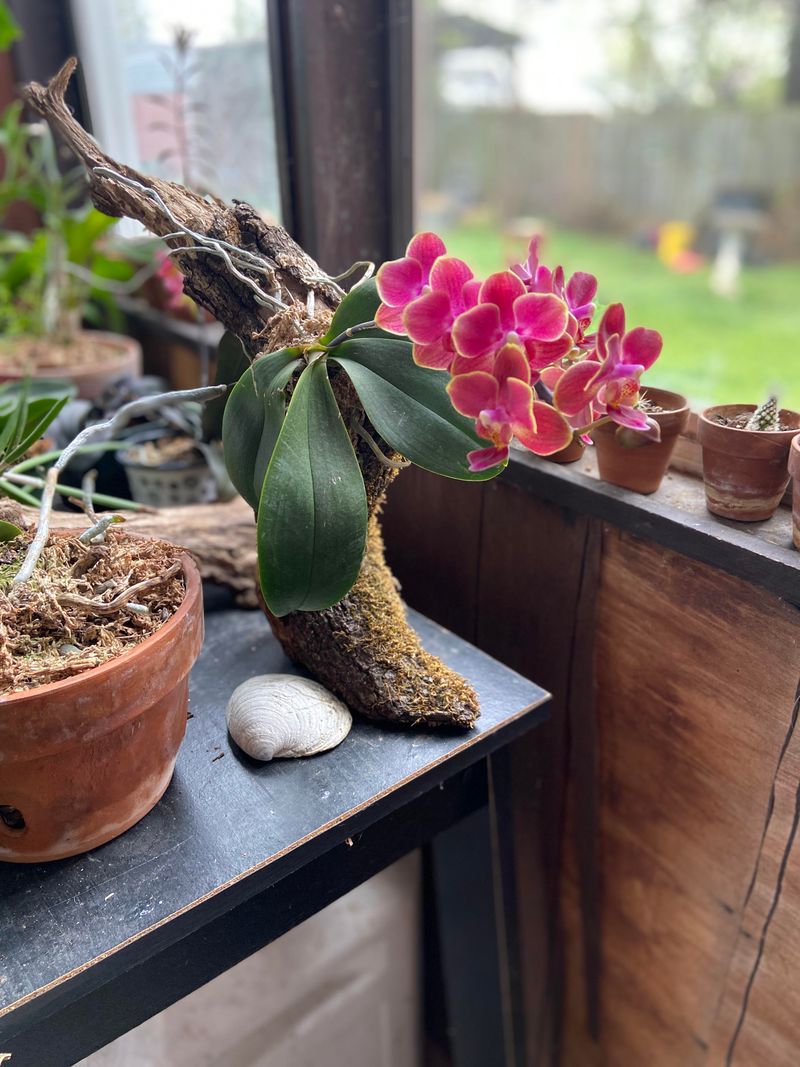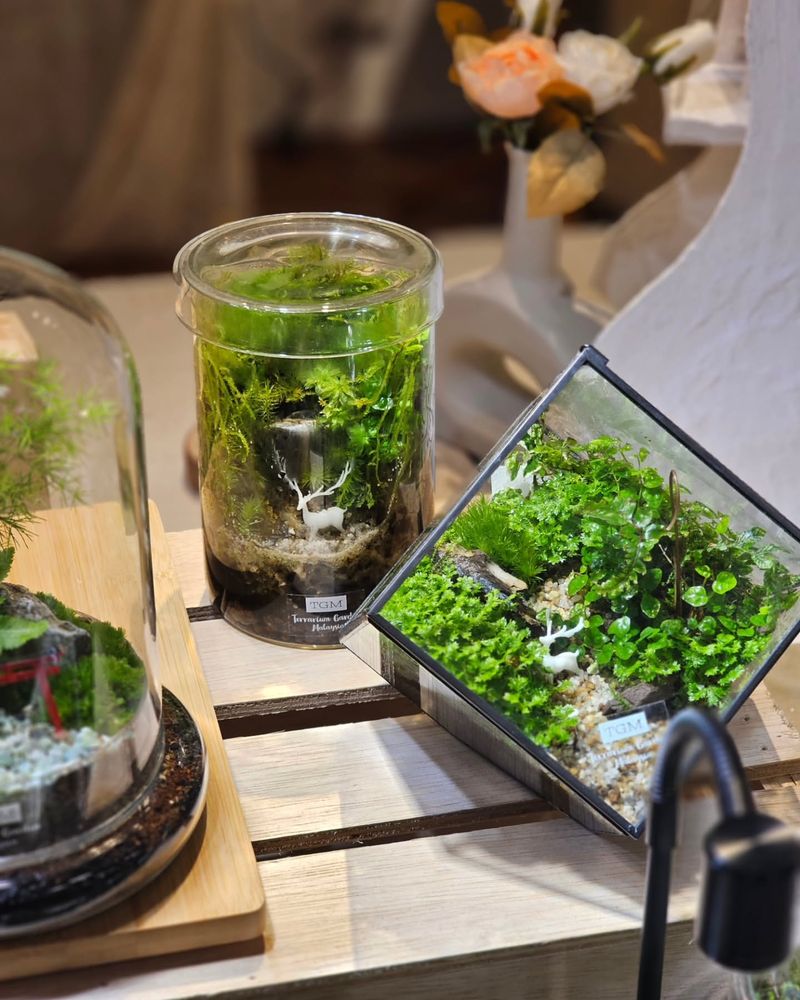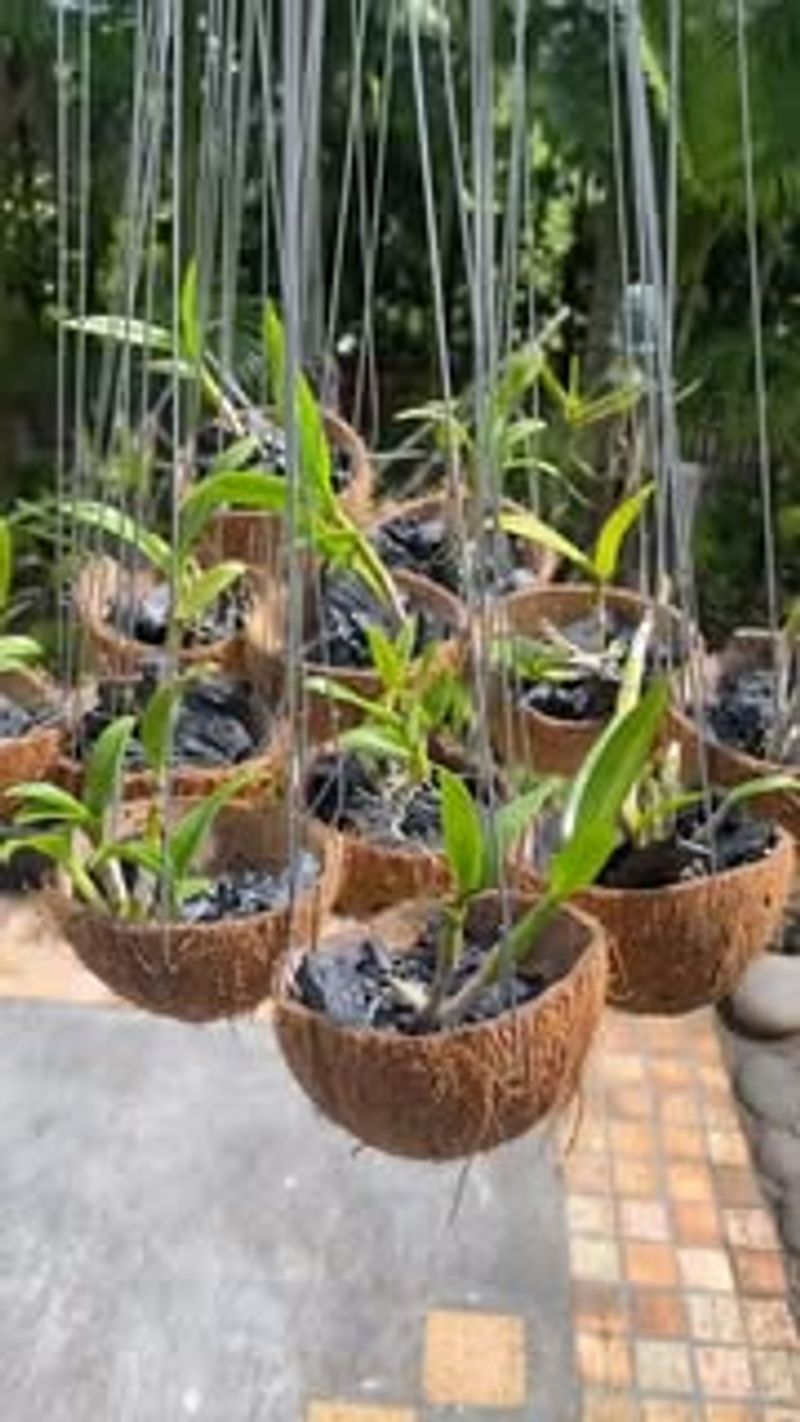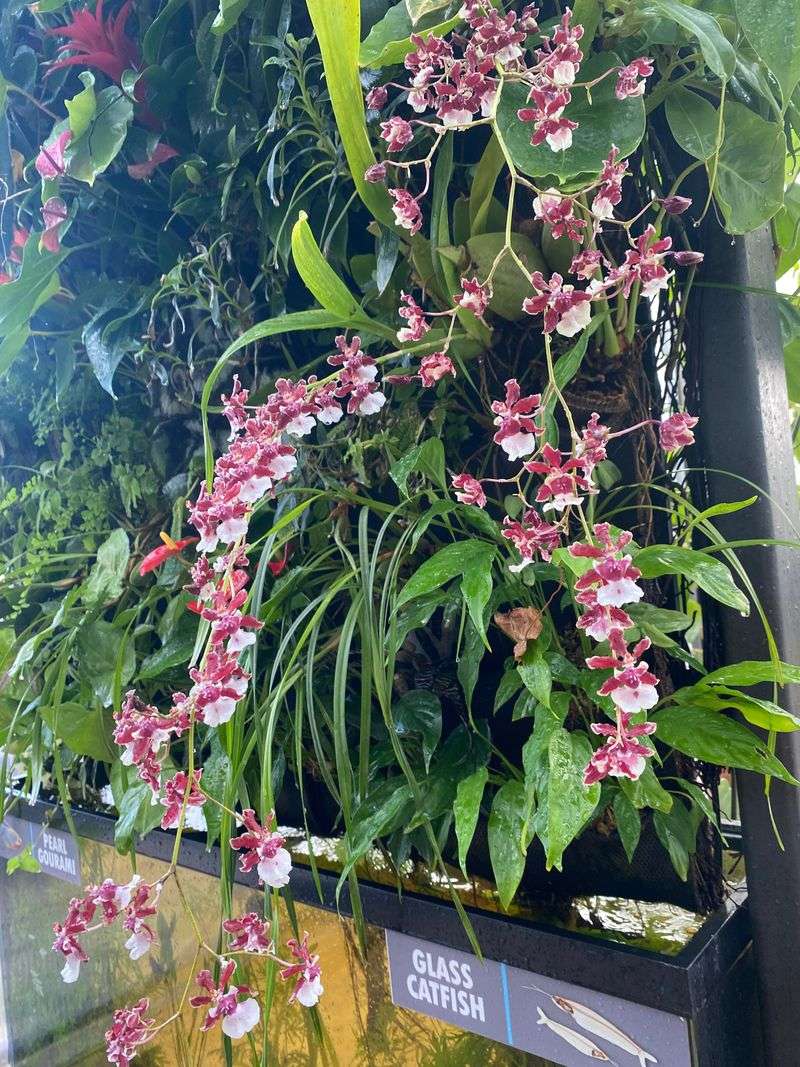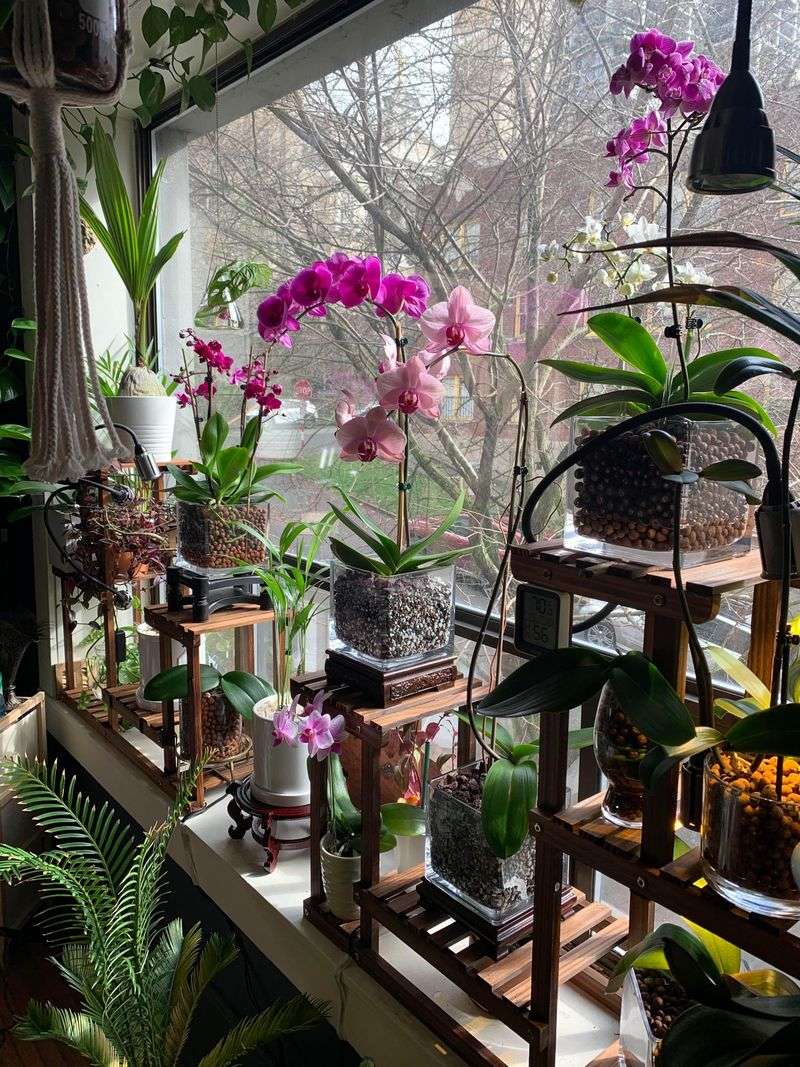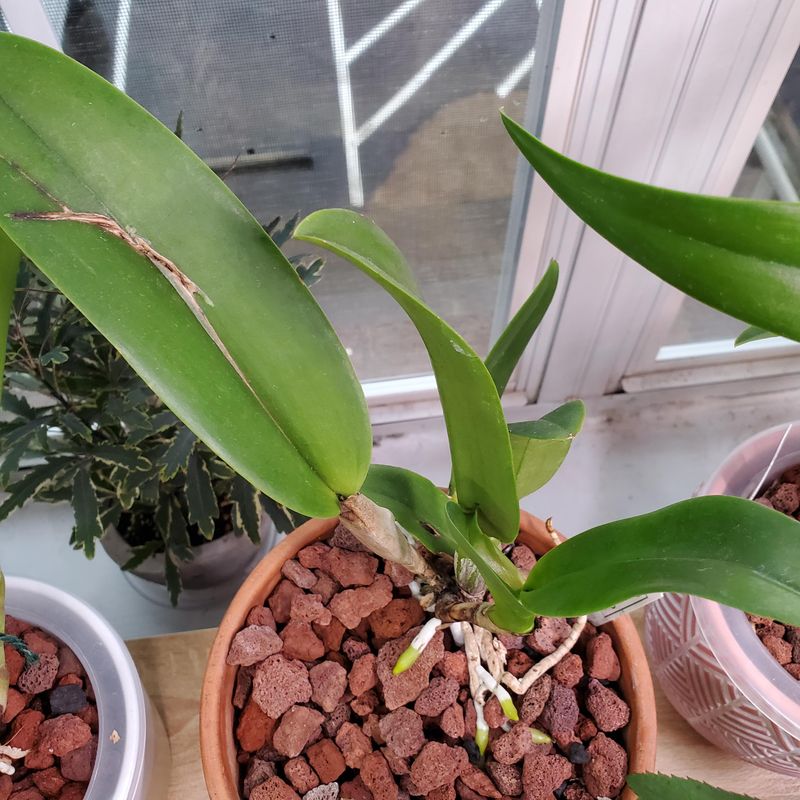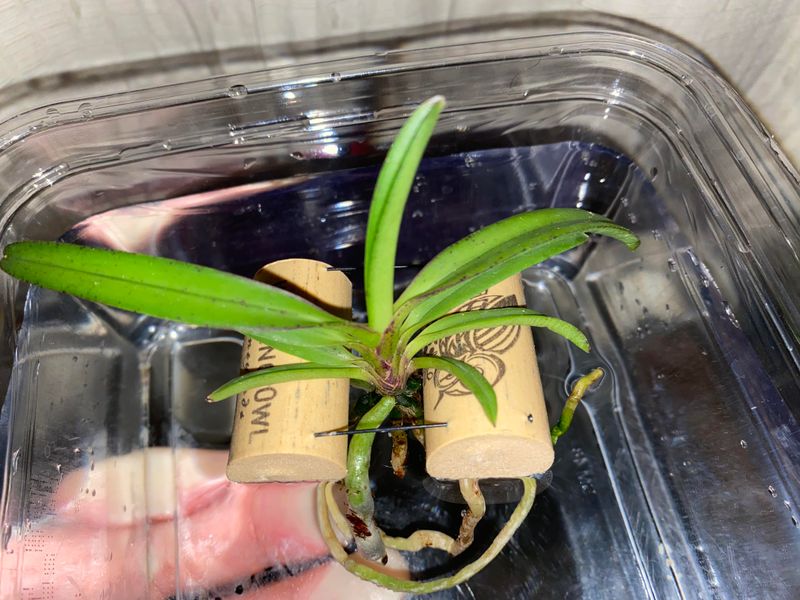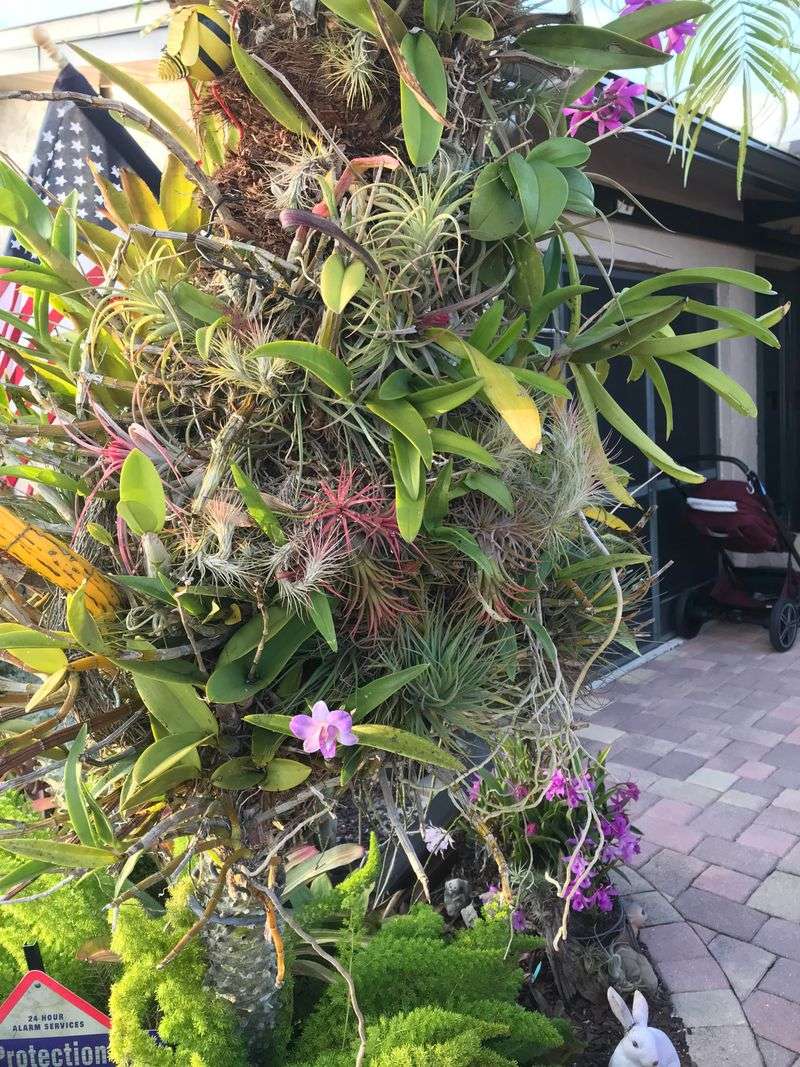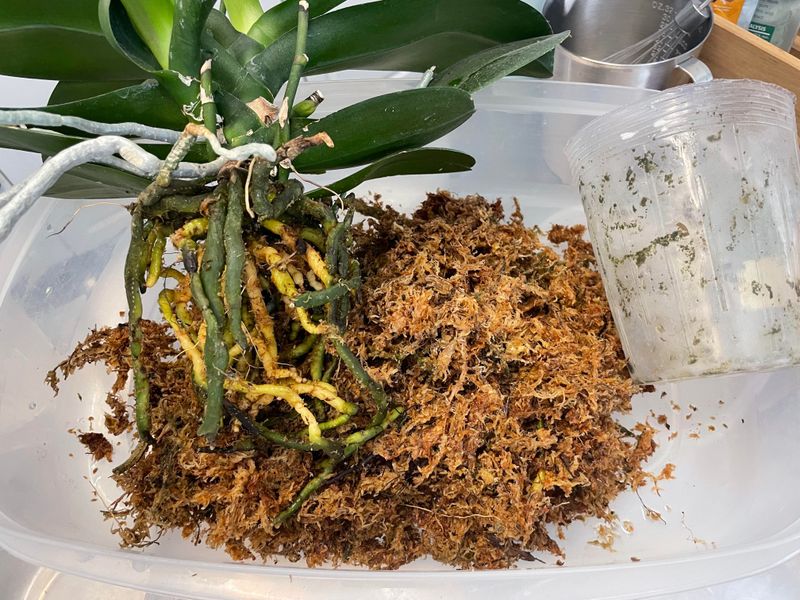Orchids don’t need dirt to thrive—they just need the right approach. These 15 genius tips unlock the secret to growing orchids in water, no soil (or mess) required.
With this clean, low-maintenance method, you’ll keep roots healthy, blooms vibrant, and your indoor space beautifully styled. Say goodbye to soggy pots and hello to sleek, soil-free growing.
1. Mount Orchids on Cork Bark
Cork bark creates a perfect natural home for orchids, mimicking how they grow on trees in tropical forests. The rough texture gives roots something to grip while allowing air circulation. Secure your orchid to a cork slab using fishing line or plant-safe wire, making sure the roots touch the surface.
Mist daily until the roots attach themselves, usually within a few months. Cork retains just enough moisture without staying soggy, preventing the root rot that often kills potted orchids.
2. Try Sphagnum Moss Wrapping
Sphagnum moss provides excellent moisture retention while keeping roots airy. Start with damp moss and wrap it gently around your orchid’s root system, creating a moist cocoon that roots love. Secure the moss ball with fishing line or thin garden wire, leaving some roots exposed to the air.
The moss acts like a natural sponge, slowly releasing water to the plant. Replace the moss every 6-12 months as it breaks down to prevent bacteria growth.
3. Create Kokedama String Gardens
Kokedama, the Japanese art of creating moss balls, works beautifully with orchids! Mix sphagnum moss with a bit of coconut coir, then form it around your orchid’s roots into a ball shape. Wrap decorative string around the ball in a crisscross pattern to hold everything together.
Hang these living ornaments near a bright window for a stunning display that saves space. Soak your kokedama weekly by dunking it in water for 5 minutes, then let it drip dry.
4. Utilize Glass Vases for Water Culture
Water culture grows orchids with their roots partially submerged in water. Choose a clear glass vase that allows you to monitor root health and water levels easily. Position your orchid so only the roots (not the crown) touch the water, using pebbles or lava rocks for support.
Change the water weekly to prevent algae growth and add orchid fertilizer monthly at quarter strength. Watch for bright green root tips – a sign your orchid is thriving in its water home!
5. Embrace Hydroponics with LECA Pebbles
LECA (Lightweight Expanded Clay Aggregate) pebbles create an ideal environment for orchid roots. These little clay balls wick moisture upward while providing excellent drainage and preventing root rot. Rinse the clay pebbles thoroughly before use to remove dust.
Place your orchid so its roots spread through the pebbles, keeping the crown above the surface. Add water to about 1/3 of the container’s height – the pebbles will do the rest, creating a perfect humidity zone for your orchid.
6. Make Wooden Slat Baskets
Wooden slat baskets provide excellent airflow that orchid roots crave. The spaces between slats allow roots to grow outward and even escape the container entirely – exactly how they grow in nature! Line the basket with a thin layer of sphagnum moss to retain some moisture.
Hang the basket near a bright window but out of direct sunlight to prevent leaf burn. The wooden structure mimics tree branches, making your orchids feel right at home while creating a rustic display piece.
7. Craft Driftwood Mounting Boards
Weathered driftwood makes a stunning natural mount that showcases orchids beautifully. The wood’s natural contours create perfect nooks for roots to nestle into while providing excellent drainage.
Soak your driftwood piece in water overnight before mounting to prevent it from stealing moisture from your orchid.
Secure the plant with fishing line or plant-safe wire until roots attach themselves. Hang your living art piece in a bathroom for extra humidity or mist it daily until established.
8. Float Orchids in Water Terrariums
Water terrariums create mini ecosystems perfect for certain orchid varieties. Choose miniature orchids like Phalaenopsis or Dendrobium and float them on cork or driftwood pieces. Add decorative stones and a few drops of hydrogen peroxide to prevent algae growth.
The enclosed environment maintains humidity naturally while creating a stunning visual display. Place your terrarium in bright, indirect light and open the lid occasionally to prevent condensation buildup that could cause rot.
9. Repurpose Coconut Husks as Planters
Coconut husks aren’t just sustainable – they’re perfect orchid homes! The natural fibers provide excellent drainage while retaining just enough moisture for healthy growth. Hollow out a coconut husk and drill a few drainage holes.
Line it with a small amount of sphagnum moss, then nestle your orchid inside, securing with plant-safe wire if needed. The natural nutrients in coconut fiber slowly release as they break down, providing gentle nourishment to your plant over time.
10. Design Vertical Garden Panels
Vertical garden panels transform orchid growing into living wall art! Create a frame with chicken wire backing and attach small pockets of sphagnum moss where orchids can be nestled. Group different varieties for a stunning color display, making sure to match orchids with similar care needs.
The vertical orientation mimics how epiphytic orchids grow in nature, clinging to tree trunks. Water your living wall by misting thoroughly or using a gentle shower spray once or twice weekly.
11. Try Semi-Hydroponics with Wicking Reservoirs
Semi-hydroponics uses a reservoir system with a wicking material to deliver consistent moisture. Drill holes in the bottom third of a plastic container and insert wicks made from nylon cord. Fill the bottom with water just below the holes, then add LECA pebbles above.
Place your orchid so its roots spread through the pebbles but don’t touch the water directly. The wicks pull moisture upward through capillary action, creating perfect humidity for root growth without the risk of rot.
12. Build Humidity Trays with Pebbles
Humidity trays create the perfect microclimate for mounted orchids. Fill a shallow tray with decorative pebbles and add water to just below the top of the stones. Place your mounted orchid above the tray – not touching the water.
As the water evaporates, it creates a humid zone around your plant, mimicking tropical conditions. Group several mounted orchids above a large tray for a stunning display that maintains ideal growing conditions without any soil.
13. Experiment with Orchid Rafts
Orchid rafts float your plants on water, creating a unique display that’s perfect for bathrooms or kitchens. Cut a piece of cork, driftwood, or lightweight foam into a raft shape. Secure your orchid to the raft using fishing line, positioning it so only the roots touch the water surface.
The constant moisture source eliminates watering worries while showcasing the plant in an unusual way. Add decorative stones or aquatic plants to the water container for an eye-catching mini water garden.
14. Fashion Air Plant Displays
Combine orchids with air plants (Tillandsia) for breathtaking soilless displays. Both plant types naturally grow without soil, making them perfect companions in mounted arrangements.
Attach both to a piece of driftwood, cork, or decorative branch using small amounts of hot glue on the base of air plants and fishing line for orchids.
The contrasting forms create visual interest while sharing similar care needs. Mist the entire arrangement 2-3 times weekly and soak briefly in water monthly for optimal health.
15. Create Moss-Wrapped Poles
Moss poles provide climbing support that mimics how orchids grow up tree trunks in nature. Wrap sphagnum moss around a PVC pipe or wooden dowel, securing it with fishing line or twine. Position your orchid at the base of the pole and gently attach aerial roots to the moss using plant clips or soft ties.
Keep the moss damp by misting regularly. Over time, your orchid will naturally climb the pole, creating a stunning vertical display as roots attach themselves to the moss surface.

